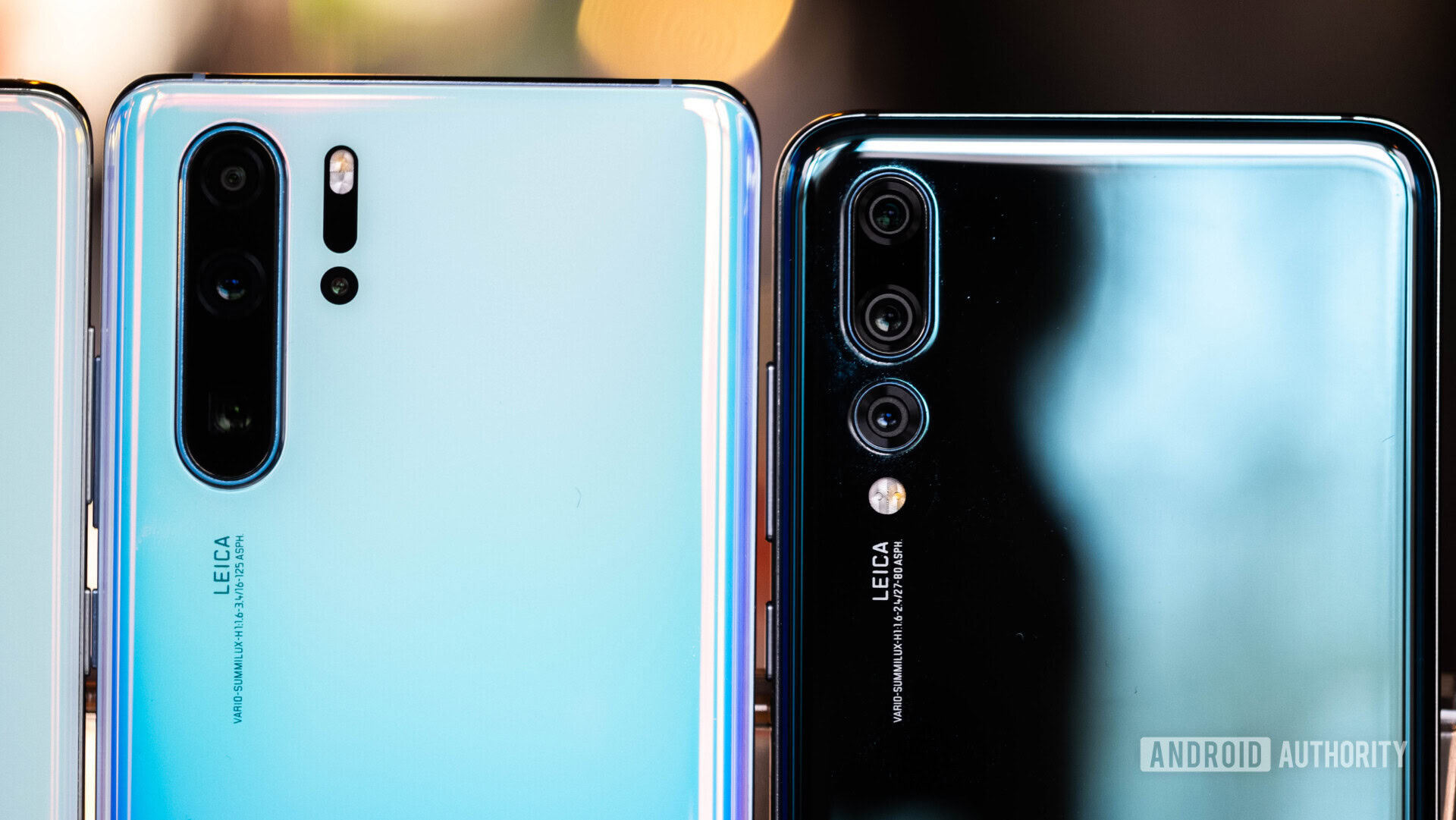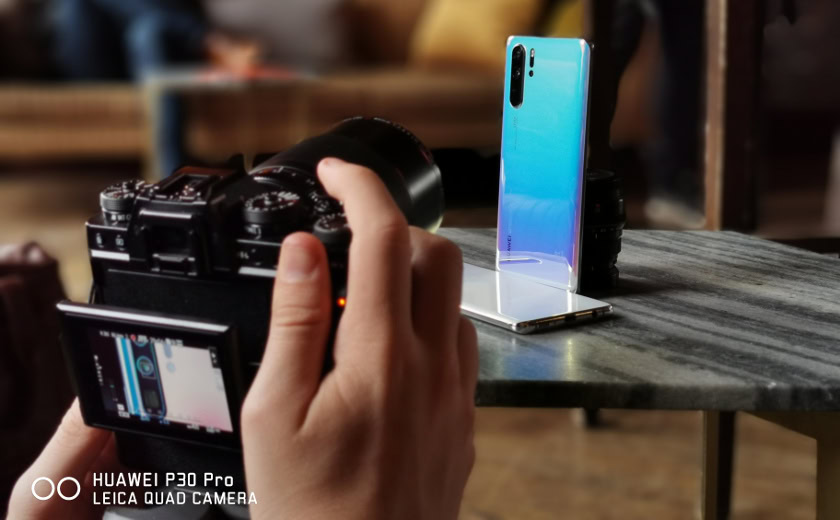Affiliate links on Android Authority may earn us a commission. Learn more.
HUAWEI P30 Pro/P30 vs P20 Pro: Quick camera comparison
March 27, 2019
Last year’s HUAWEI P20 Pro launched Huawei to the top of the mobile photography leaderboards. The phone’s camera has remained there since, fending off fierce competition from Samsung’s Galaxy Note 9 and the Google Pixel 3. Can the new HUAWEI P30 and P30 Pro perform even better?
The latest HUAWEI flagships introduce a number of new photography features. There’s a new 40MP SuperSpectrum sensor that switches from a traditional RGB filter to RYB for more light capture, paired up with a wide-angle sensor that first appeared with the Mate 20. The third camera is a new periscope design, offering 5x optical zoom and 10x “lossless” Hybrid Zoom capabilities. Overall, the P30 Pro is quite a different setup from the excellent HUAWEI P20 Pro. The regular P30 is more similar to last year’s flagship.

This isn’t intended to be a fully fleshed out camera shootout. We want a lot more time with the final devices for that. Instead, consider this an early look at the camera of the HUAWEI P30 and HUAWEI P30 Pro, compared to last year’s P20 Pro.
Click here to check out the full range of camera samples for yourself.
40MP offers plenty of detail
In the piano picture, both cameras handle the background and foreground exposure very well. The wider aperture on the P30 cameras means that blur occurs sooner in the middle ground, but there’s not a lot in it. Another difference is the subtle color tint of the piano’s black paint and keys. The P30 has to recover green data from its RYB sensor, and in this instance may have over-recovered the information, resulting in the greener tint. Although it’s not noticeable without a side-by-side comparison.
In the second picture, the HUAWEI P30 shot does a better job of light captured in the room. The camera handles the high exposure from the windows while still brightening the interior and capturing the warm hue of the indoor lights. The HUAWEI P20 Pro appears a little dark and dull by comparison. Overall though, both cameras expose the scene rather well, giving the harsh contrast and so-so lighting in the room.
Cropping in on the image reveals some more unsightly problems for the P30 and P30 Pro. For starters, the denoise algorithm results in a patchy texture detail across textures on the P30. This appears across the curtains, roof, and floor in this image, but the P20 Pro handles them with much less noise.
More worryingly, there are clear signs of chromatic aberration lens distortion. Note the purple and red highlights apparent on the edges of high contrast, including the elbow, curtains, and lamp top. This image below showcases it even more clearly. The P30 camera’s wider ƒ/1.6 aperture (versus ƒ/1.8 on the P20 Pro) might be helpful for light capture and fancy looking bokeh blur. However, the lens components are tougher to build without distortion and it’s not clear that the P30 gets this entirely right.
It’s not a slam dunk for the HUAWEI P20 Pro. Its algorithm applies more aggressive sharpening to edges, which can produce some overly harsh lines. Although, overall it appears to offer less noise and more detail from its 40MP main sensor, at least as far as moderately good lighting is concerned.
Optical vs Hybrid Zoom
Both the HUAWEI P20 Pro and P30 offer a 3x telephoto zoom and 5x Hybrid Zoom, while the P30 Pro extends this to a 5x optical and 10x Hybrid Zoom implementation. We’ll start by looking at how the old and new models compare with their capabilities maxed out at 5x. This is at 100-percent crop.
The P30 is a tad underexposed here but is less noisy than the P20 Pro. For example, the text is a little better defined and a tad more readable. However, the P30’s zoom appears to lack detail compared to the P20 Pro. The brickwork and windowsill both lack texture, for a start. Furthermore, the stonework below the window is smudged in places, while the P20 Pro retains extra detail and shadowing on the leaves. Most likely, this difference is down to a more aggressive denoise algorithm in the P30.
Meanwhile, the P30 Pro is night and day at 5x. The image is free from noise yet captures much more detail both in the text, on the brickwork, and in the stonework. This second greener image showcases an even greater boost in detail, texture, and lighting for the P30 Pro at 5x. As we’ve said before, optical zoom beats Hybrid zoom hands-on. Although it’s actually quite hard to tell these details apart without resorting to a 100% crop, and Hybrid Zoom holds up quite well at a distance.
We know that the HUAWEI P30 Pro excels at long range, but what about at medium range where the P30 and P20 Pro’s 3x telephoto lens might outperform the P30 Pro’s 3x Hybrid Zoom?
Here, the roles are reversed. The regular HUAWEI P30 comes out on top with superior texturing, detail capture, and less noise. The P30 Pro, by comparison, appears rather smudged and blocky looking. It’s still better than digital zoom, but it’s clear that optical zoom wins out in every scenario over Hybrid Zoom.

Which camera is the best?
We don’t want to draw too many conclusions before conducting a more in-depth shootout, but we can clean a couple of early trends from this quick look at the new HUAWEI P30 cameras.
First, the HUAWEI P30 Pro is the king of long-distance zoom. It’s 5x optical and 10x Hybrid capabilities handily beat out the P30 and P20 Pro. However, over medium distances at 3x to 4.9x, it’s actually the P30 and P20 Pro that win out.
Then there’s the new RYB Super Spectrum main sensor. In these daylight shots, the new camera appears to perform slightly worse than the HUAWEI P20 Pro. Additional noise and chromatic aberration are the main problems. Combined with the green over-recovery issue in the piano picture, solving the low-light problem may have introduced a few daylight issues.
Of course, we’ll reserve our full judgment until we can take more snaps with HUAWEI’s final camera software. Still, what do you think about the new cameras inside the HUAWEI P30 and P30 Pro? Are they a worthwhile upgrade compared to last year’s impressive P20 Pro?